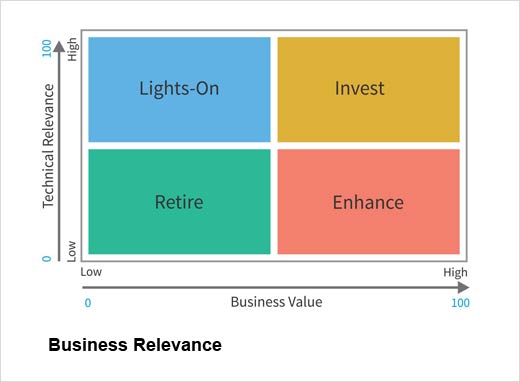As organizations evolve, they build context-specific software applications to meet business needs. Over time, the environment for which these applications had been developed to execute business operations changes shape. Shifting business imperatives, mergers and acquisitions, and more often than not, the disconnected operations of different business units create a gap between what the applications were built to do and what the company needs its applications to do today. Organizations are left with a portfolio of applications that are redundant, no longer provide the required business functionality, and are increasingly expensive to maintain.
In the age of the digital economy, when business agility and quick delivery are required to compete effectively, having a rigid and costly application portfolio can become truly detrimental to the business. Company leaders (often CTOs, CIOs or heads of IT) need to conduct an application portfolio rationalization to assess their software platform’s capabilities relative to business needs. Rajeev Sharma, chief solutions officer at Ness Software Engineering Services, a company that helps its clients build new digital platforms and modernize existing software solutions, shares his recommendations for the five steps critical to the application portfolio rationalization process.
Streamlining the Application Portfolio
Click through for five steps critical to the application portfolio rationalization process, as identified by Rajeev Sharma, chief solutions officer at Ness Software Engineering Services.
Capture a Baseline
Discover and capture a baseline state of capabilities.
The best place to start is to look at application capabilities relative to the company vision. Record the core applications, platforms, products, processes, risk profiles and costs to capture the “as is” or “baseline” state of existing capabilities relative to future focus areas for all of the different lines of business. Also consider geographies, product lines, and other key factors specific to the organization. Keep in mind that there are different levels of granularity that some companies need to drill down to, depending on the markets for their products/services.
Business Relevance
Evaluate and score each application based on business relevance.
The next step involves evaluating and scoring each application based on business and technology relevance. It’s then relatively easy to plot the scores on a 2×2 chart (low to high business value or technology relevance) organized into categories, such as maintain, invest, retire or enhance. This process serves as a way to conduct a value analysis and to visually organize the applications to help in the assessment and decision-making process.
Develop a Plan
Map out a plan for which applications to retire, maintain, enhance or invest in further.
Once an organization knows what applications it wants to remove, it can devise a go-forward plan for the applications it has decided to maintain, enhance or further invest in. For applications to fall into one of these three categories, the applications should be positioned to contribute to sustainable business results and create better alignment between business needs and the enabling technology layer. Applications that require further investment need a defined path to maximize the ROI. The plan should be shared throughout the organization and backed by business unit heads.
Execute the Plan
The next step is to cleanse the platform, a process that requires not only removing dated applications, but also taking a closer look at technical debt at the process and/or business application layer. Communicating with the various business units is essential prior to removal. It’s never good to assume that an application is completely irrelevant without confirming with the appropriate stakeholders. Also, try to coordinate the retirement of applications throughout the organization in one initiative, rather than via a piecemeal process.
Govern the Process
Apply strong governance practices during the implementation phase. Change is challenging to enact, so a disciplined process helps everyone stay on track. Capture progress through appropriate reports and/or visual dashboards. This governance structure should also enumerate the steps for escalation, remediation and clearly spell out the relevant decision-making structure. It also sets the groundwork for the application governance process to take forward to help keep technology in alignment with business needs.








